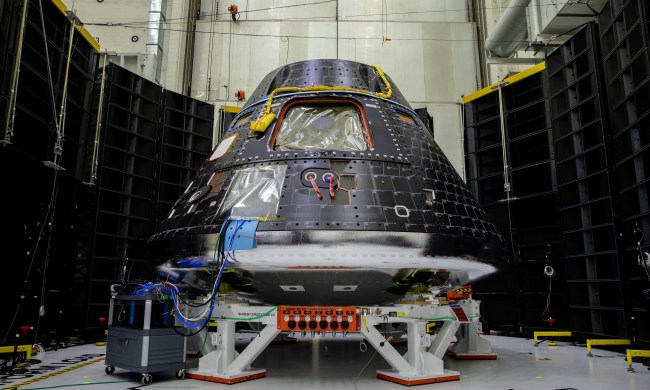When NASA’s Psyche mission launched in October of last year, it had a special passenger on board: a test of a new communications system using lasers, named Deep Space Optical Communications (DSOC). That system sent back its first data in November, and now it has hit another milestone, with signals from the experiment being received by a hybrid antenna on Earth.
The vast majority of deep space missions communicate using radio frequencies, which is a tried and tested technology that has been in use for decades. However, there are bandwidth limitations to radio communications, and as missions collect ever larger amounts of data, a new communications technology is required to send them. That’s where laser or optical communications come in, as this can improve the available bandwidth by 10 or even 100 times over radio.

DSOC is testing whether sending signals from deep space crafts using laser communications is feasible. But the other half of the equation is receiving those signals on Earth. NASA’s Deep Space Network (DSN), which receives signals from these deep space missions, is now experimenting with a hybrid design antenna that can receive both radio and laser signals.
This experimental hybrid antenna has been able to receive both laser signals from DSOC and radio signals from Psyche for the first time. “Our hybrid antenna has been able to successfully and reliably lock onto and track the DSOC downlink since shortly after the tech demo launched,” said Amy Smith, DSN deputy manager at NASA’s Jet Propulsion Laboratory, in a statement. “It also received Psyche’s radio frequency signal, so we have demonstrated synchronous radio and optical frequency deep space communications for the first time.”
The hybrid antenna was built by retrofitting existing radio antenna hardware and adding a group of segmented mirrors to the very center of the dish. This allows the laser signals to be redirected to a camera placed on the long arms that extend from the dish’s structure.
“We use a system of mirrors, precise sensors, and cameras to actively align and direct laser from deep space into a fiber reaching the detector,” explained Barzia Tehrani, communications ground systems deputy manager and delivery manager for the hybrid antenna at JPL.
The aim is to upgrade more dishes in the DSN network to use both laser and radio communications, or even to construct new purpose-built hybrid antennae in the future. “We can have one asset doing two things at the same time; converting our communication roads into highways and saving time, money, and resources,” said Tehrani.



